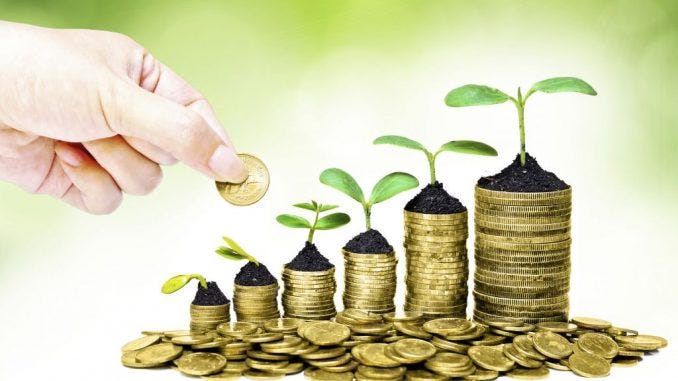
Photo by Julio Lopez on Unsplash
Buy Now, Pay Later has become unavoidable during transactions. Whether you're purchasing athletic footwear digitally or settling for a meal at a dining establishment, services like Sezzle, Klarna, and Afterpay propose to divide your transaction into payments with no credit card necessary.
Grasping the operations underlying these platforms discloses why they've transformed conventional consumer finance and why retailers enthusiastically incorporate them into transaction interfaces.
The Basic Transaction Flow
When you choose BNPL at checkout, you're essentially getting an instant microloan structured as installments rather than revolving credit. The platform runs a soft credit check that doesn't affect your credit score, evaluates your purchase history with them, and decides within seconds whether to approve your transaction. If approved, you typically pay twenty-five percent immediately while the BNPL provider pays the merchant the full amount minus their processing fee.
Here's where it gets interesting from a technical standpoint. The merchant receives their money instantly, minus the platform's cut which typically ranges from three to six percent plus a flat fee. You get your product immediately, but are only paid a fraction of the cost.
The BNPL platform essentially buys the item from the merchant on your behalf, then becomes your creditor for the remaining balance. This triangular transaction happens in seconds during checkout, with approval algorithms evaluating dozens of data points about your financial behavior and purchase patterns.
The Payment Schedule Structure
Most BNPL services offer variations on splitting purchases into four payments spread over six weeks. Sezzle's traditional option divides your total into four equal installments paid every two weeks.
Other platforms like Affirm offer longer terms for bigger purchases, stretching payments over months instead of weeks. The key distinction from credit cards is that your payment schedule is fixed at purchase time rather than offering minimum payments that can extend indefinitely.
The payment automation runs through the debit card or bank account you connected during setup. When your installment date arrives, the platform automatically withdraws the payment. This automation creates convenience but also risk since insufficient funds trigger late fees that accumulate quickly.
How Platforms Make Money Without Charging Interest
If you're wondering how BNPL companies profit without charging interest on most plans, the answer lies in merchant fees and late penalties. Merchants pay substantially higher processing fees for BNPL transactions compared to credit cards.
Where credit card processors typically charge two to three percent, BNPL platforms charge four to six percent plus transaction fees. Merchants accept this premium because BNPL increases conversion rates and average order values by removing sticker shock at checkout.
Late fees provide the second revenue stream. Miss a payment and platforms charge fees ranging from five to ten dollars per occurrence, plus some add additional interest charges on rescheduled payments. The platforms also make money through premium subscription services that offer higher spending limits and fee-free rescheduling.
The Merchant Perspective and Why They Adopt BNPL
Retailers integrate BNPL because the math works in their favor despite higher processing costs. Studies show BNPL increases conversion rates by twenty to thirty percent since breaking a three-hundred-dollar purchase into four seventy-five-dollar payments reduces psychological resistance. Average order values also increase as customers feel comfortable spending more when payment is deferred.
The merchant receives full payment immediately while the BNPL platform assumes all fraud and repayment risk. If you default on your installments, the merchant keeps their money while the BNPL provider absorbs the loss. This risk transfer makes BNPL attractive for merchants compared to traditional payment methods where chargebacks can claw back funds months after a sale.
When exploring options or reading a comprehensive Sezzle review or any market, merchants evaluate platform reliability, integration simplicity, and the balance between higher fees and increased sales volume.
Credit Implications and Regulatory Changes
BNPL historically operated in a regulatory gray area, not reporting to credit bureaus and avoiding many consumer lending regulations. That's changing as regulators recognize these services as credit products.
The credit reporting landscape is also shifting. Some BNPL providers now report payment history to credit bureaus, meaning responsible use can build credit while missed payments can damage it.
The soft credit checks used for approval don't affect your score, but defaulting on payments increasingly appears on credit reports. This evolution matters because BNPL is no longer an invisible form of credit that exists outside traditional financial infrastructure.
Multiple Purchase Management and Spending Limits
One overlooked aspect of BNPL mechanics is how platforms handle multiple simultaneous purchases. Your spending limit isn't a simple credit line but rather a dynamic calculation based on your outstanding payment obligations. If you have two hundred dollars in upcoming installments across three purchases, your available spending power decreases by that amount even though you've only borrowed a fraction of those totals.
The platforms track what they call "spending power" or "available credit" that updates in real-time as you make payments and add new purchases. This creates complexity when managing multiple BNPL purchases across different platforms since you're tracking four separate payment schedules for each purchase across potentially several providers. The cognitive load of remembering six or eight payment dates per month across different platforms contributes to the rising late payment rates.
Endnote
Overdue charges accumulate more rapidly than customers anticipate. One defaulted payment on three separate transactions in a single month produces thirty dollars in penalties, essentially a brief loan at an extraordinarily high annual percentage rate. Certain customers enter patterns where they're settling penalties and recovering from previous transactions while including additional ones, forming a debt cycle that mirrors the credit card difficulties BNPL pledged to resolve.



